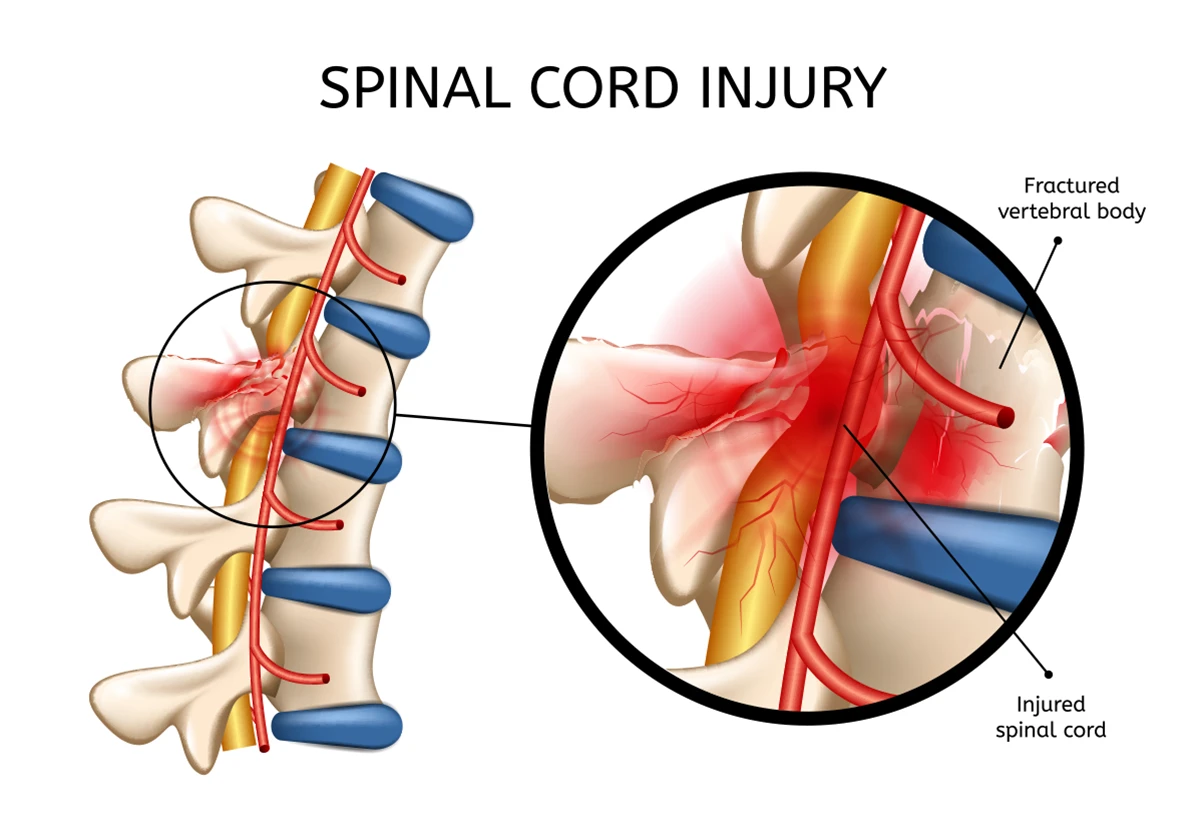It is estimated that more than 12,000 people in the United States will suffer spinal cord injuries this year alone. The weeks, months and years that follow present a unique set of challenges to deal with. If you or a loved one is affected, it is important to first educate yourself about the condition in order to deal with it head-on. You need to understand the mechanism of spinal injury and where it can occur.
General spinal anatomy
Most of us think of our spine as one part of the body. It’s actually a little more complicated than that. The column of nerves, which is divided into 31 butterfly-shaped vertebrae, is generally divided into five main areas:
- Cervical: Upper part of the spine where connections to the brain are made
- Thoracic: Middle of the spine
- Lumbar: The lower part of the spine where you can feel the curve in your lower back
- Sacral: Triangular lower part of the spine composed of nerve roots
- Coccygeal: A single vertebra at the base of the spinal cord, often called the tailbone
As you can see, the spine is more complex than a single bone in the body. Because of this, there are various spinal conditions that you may suffer from.

Why does anatomy matter?
So why is understanding this anatomy so important when it comes to spinal rehabilitation? Physicians need to understand potential complications depending on where the spinal cord injury occurs. Based on the location, they can determine appropriate rehabilitation to ensure proper treatment. A few of the spinal disorders that can be diagnosed are:
- Lumbar Radiculopathy
- Spinal Stenosis
- Spondylolisthesis
- Facet Syndrome
- Herniated Discs
- Cervical Radiculopathy
- Degenerative Disc Disease
Main types of spinal cord injuries
After understanding the five parts of the spine, we can further divide spinal injuries into two major categories. They are incomplete and complete. An incomplete injury means that the cord is only partially severed and the person can retain some function. However, this can be more difficult to achieve if the spine is completely severed.
Incomplete spinal injury
Incomplete spinal cord injuries are more common, accounting for more than half of cases. It is important to understand where the injury is and whether it is complete or incomplete. This is because it will help you ask your doctor the right questions and ultimately give the problem a proper label.
Complete spinal injury
There are three major complete spinal injuries people suffer from.
- Tetraplegia: It is usually the most severe case and can cause varying degrees of paralysis in all limbs.
- Paraplegia: Paralysis or inability to move the lower body.
- Triplegia: Paralysis or numbness in one arm and both legs.
Common symptoms of spinal injury
The good news is that, if you suffer from a spinal injury, you won’t have to keep thinking about it. You’ll be aware of the problem. Identifying the type of injury you have is the difficult part. Here are a few signs you should keep an eye out for as you collaborate with your doctor to make the diagnosis:
-
- Mood changes
- Nerve pain
- Chronic muscle pain
- Chronic pain
- Headache
- Fertility issues
- Varying degrees of paralysis
- Breathing issues
- Bladder and/or bowel issues
- Bedsores
For treatment of spinal injuries, visit Specialty Care Clinics.
